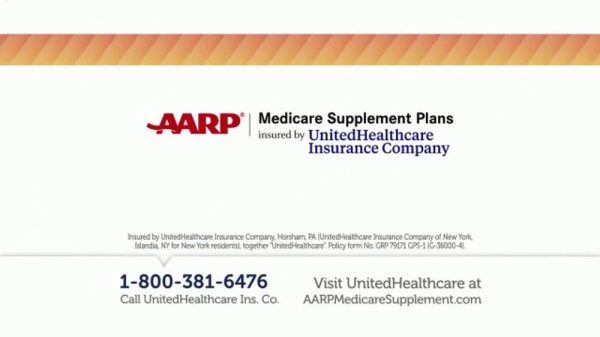
The complexities of Medicare can often feel like navigating a labyrinth, especially when considering supplemental coverage. Among the myriad options available, AARP Medicare Supplement Insurance plans, insured by UnitedHealthcare, consistently rank as a popular choice. But popularity doesn't guarantee suitability. This article aims to provide a thorough and objective exploration of these plans, equipping you with the knowledge necessary to determine if they align with your individual healthcare needs and financial circumstances.
Understanding Medigap: The Foundation of AARP/UnitedHealthcare Plans
Before delving into the specifics of AARP/UnitedHealthcare offerings, it's crucial to understand the fundamental principle of Medicare Supplement Insurance, often referred to as Medigap. These standardized plans, designated by letters (e.g., A, B, G, N), are designed to fill in the "gaps" in Original Medicare (Parts A and B). This means they help cover expenses such as deductibles, copayments, and coinsurance that you would otherwise be responsible for paying out-of-pocket.
AARP/UnitedHealthcare offers several Medigap plans, each providing varying levels of coverage. While the core benefits associated with each lettered plan are standardized across all insurance providers offering them, AARP/UnitedHealthcare distinguishes itself through its brand recognition, member benefits, and service quality.
A Deeper Dive into AARP/UnitedHealthcare Medigap Plans:
Let's examine some of the most popular AARP/UnitedHealthcare Medigap plans:
Plan G: Often considered the most comprehensive option, Plan G covers virtually all of Original Medicare's out-of-pocket expenses, except for the Part B deductible. This plan is a strong contender for individuals seeking predictable healthcare costs and minimal exposure to unforeseen medical bills.
Plan N: Plan N provides robust coverage, mirroring Plan G in many respects. However, it differs by requiring copayments for some doctor's office and emergency room visits. While this can result in lower monthly premiums, it also introduces a degree of variability in out-of-pocket expenses.
Plan A & B: These plans offer more basic coverage, covering a smaller percentage of your Medicare Part A and B costs. They are usually the least expensive options but will expose you to higher out-of-pocket expenses.
The AARP/UnitedHealthcare Advantage: Benefits and Considerations
Beyond the standardized Medigap benefits, AARP/UnitedHealthcare offers several advantages that contribute to its popularity:
Brand Recognition and Trust: AARP has a long-standing reputation for advocating for senior citizens, lending credibility and reassurance to its partnered insurance offerings. UnitedHealthcare is a well-established national insurance provider with extensive experience in Medicare coverage.
Potential Discounts: AARP members may be eligible for discounts on certain AARP/UnitedHealthcare Medigap plans.
Extensive Network: While Medigap plans allow you to see any doctor who accepts Medicare, UnitedHealthcare's vast network can be beneficial for those seeking specific specialists or healthcare facilities.
Supplemental Benefits: While not directly related to Medigap coverage, AARP/UnitedHealthcare often provides access to supplemental benefits such as health and wellness programs, vision discounts, and hearing aid discounts.
However, it's crucial to consider potential drawbacks:
Premiums: AARP/UnitedHealthcare plans may not always be the least expensive option in your area. It's imperative to compare rates from multiple insurance providers to ensure you're receiving the best value for your needs.
Membership Requirement: AARP membership is required to enroll in AARP/UnitedHealthcare Medigap plans, which involves an annual fee.
Making an Informed Decision:
Choosing the right Medicare Supplement Insurance plan is a highly personal decision that should be based on careful consideration of your individual circumstances. Here are key factors to evaluate:
Healthcare Needs: Assess your current and anticipated healthcare needs. Do you anticipate needing frequent medical care or specialized treatments? A more comprehensive plan like Plan G may be preferable.
Financial Situation: Evaluate your budget and risk tolerance. Can you comfortably afford higher monthly premiums for more comprehensive coverage, or would you prefer lower premiums with the potential for higher out-of-pocket expenses?
Prescription Drug Coverage: Remember that Medigap plans do not include prescription drug coverage. You will need to enroll in a separate Medicare Part D prescription drug plan.
Comparison Shopping: Obtain quotes from multiple insurance providers, including AARP/UnitedHealthcare, to compare premiums and benefits.
Conclusion:
AARP/UnitedHealthcare Medicare Supplement Insurance plans offer a viable option for individuals seeking to supplement Original Medicare coverage and mitigate out-of-pocket expenses. However, it’s crucial to carefully evaluate these plans against your individual needs, budget, and preferences. Thorough research, comparison shopping, and professional guidance are essential steps in navigating the complexities of Medicare and making an informed decision that will provide you with peace of mind and financial security in your healthcare journey. Consulting with a licensed insurance agent specializing in Medicare can provide personalized advice tailored to your specific situation. Remember, the optimal plan is not necessarily the most popular, but the one that best aligns with your individual needs and circumstances.
